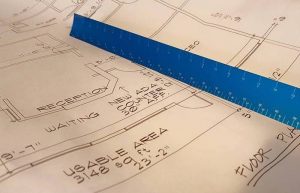Architects, designers, and planners use architect scale rulers in their work every day. Here are 3 ways that an architect scale ruler can help a homeowner like you, too.
- Plan a new arrangement of furniture in your living room. Whether you just

Kitchen Design moved in, or you just want to make a fresh arrangement of your furniture, you can start with a piece of paper and an architect scale ruler to see if your plan will actually fit the way you want it to fit.
- Design a new kitchen in your home. The best way to start is to find a picture of a kitchen in a magazine, then see if the components will fit into your space. An architect ruler will let you make precise measurements in your drawings of different kitchen designs.
- Design a garden in your back yard. If your space is limited, the architect ruler will help you to make the best of the space you have. You may discover that you don’t need to buy as many tomato plants, or pepper plants.







